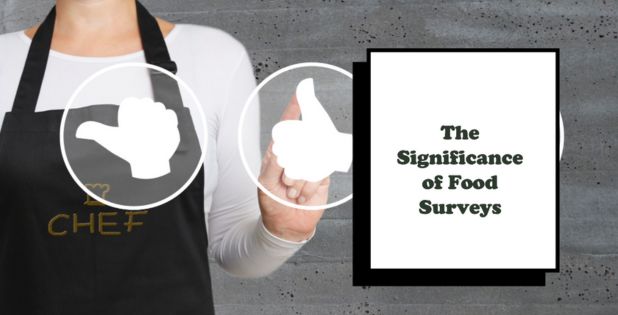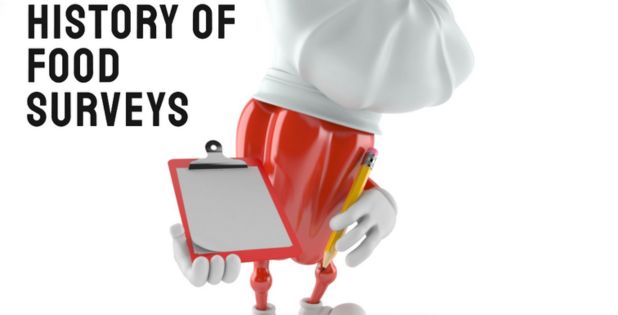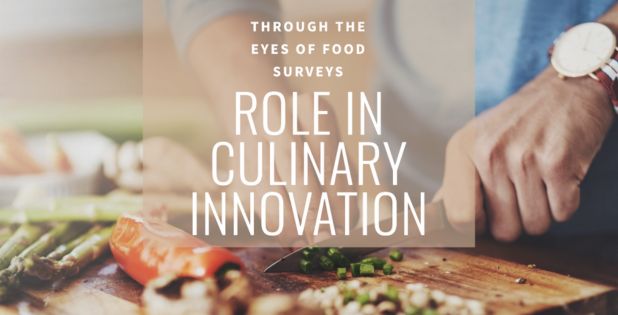How Food Surveys Shape the Culinary Landscape

Fun Survey Questions – Samples & Inspiration
November 21, 2023
Travel Surveys : A Window into the Future of Tourism
December 7, 2023Have you ever wondered how new food trends emerge or why certain ingredients suddenly become all the rage in the culinary world?
The answer may lie in the often-overlooked world of food surveys.
These seemingly mundane questionnaires wield immense power in shaping the culinary landscape, influencing everything from
restaurant menus to grocery store shelves.
In this article, we will explore the fascinating realm of food surveys and how they are crucial in driving consumer preferences and
ultimately shaping our eating.
From uncovering emerging flavor profiles to identifying shifting dietary preferences, food surveys provide invaluable insights that
drive innovation and influence the choices made by chefs, food manufacturers, and even home cooks.
By understanding how these surveys impact our culinary experiences, we can better appreciate their significance in defining
contemporary gastronomic trends.
Join us as we embark on a journey through the world of food surveys to uncover their hidden influence on our dining habits and
discover how they contribute to shaping the ever-evolving tapestry of flavors that define our modern culinary landscape.
The Significance of Food Surveys

Food surveys are critical in shaping the culinary landscape by providing valuable insights into consumer preferences, trends, and
behaviors.
These surveys go beyond gathering data on what people eat; they delve deep into the cultural, social, and economic factors
influencing food choices.
By analyzing the results of these surveys, businesses can tailor their offerings to meet consumer demands better and stay ahead of
industry trends.
 Moreover, food surveys promote sustainable and healthy eating habits by highlighting areas where improvements can be made in
nutrition and environmental impact.
The significance of food surveys extends beyond just the business realm; they impact public policy, healthcare initiatives, and even
cultural preservation efforts.
By understanding how different demographics perceive and consume food, policymakers can design more effective programs to
address food insecurity or unhealthy eating habits.
Additionally, these surveys provide a window into traditional culinary practices at risk of being lost in an increasingly
homogenized global food culture.
Furthermore, they allow for a better understanding of dietary patterns across diverse communities, paving the way for more
inclusive and culturally sensitive approaches to nutrition education and public health campaigns.
History of Food Surveys

Food surveys have been pivotal in shaping the culinary landscape throughout history.
 From early agricultural societies documenting crop yields to modern-day consumer preference surveys, the evolution of food
surveys reflects the changing dietary habits and cultural shifts over time.
These surveys provide valuable insights into consumer behavior, food trends, and nutritional patterns, offering a comprehensive
understanding of how our relationship with food has evolved.
In ancient civilizations, food surveys assessed agricultural production and distribution, providing essential information for
resource management and trade.
As societies became more interconnected through global trade routes, these surveys expanded to
include the documentation of exotic spices, new ingredients, and diverse cooking techniques.
 Today, food surveys continue to influence the culinary world by capturing data on dietary preferences, sustainability practices,
and the impact of technology on food consumption.
By analyzing these historical roots of food surveys, we gain a deeper appreciation for how they have shaped our culinary traditions
and influenced how we experience food today.
Influence on Consumer Behavior

Various factors influence consumer behavior, with marketing and advertising significantly shaping purchasing decisions.
Food surveys, in particular, can impact consumer preferences and trends within the culinary landscape.
 By analyzing consumer attitudes towards food, these surveys can uncover insights that help businesses tailor their offerings to
meet the changing demands of their target audience.
In addition to marketing influence, social and environmental factors play a crucial role in shaping consumer behavior.
The rise of sustainability movements and ethical consumerism has shifted preferences towards eco-friendly and ethically sourced
products.
As a result, food surveys can uncover valuable data on consumers’ willingness to support sustainable practices, which businesses
can use to align their offerings with these values.
Overall, understanding the intricate relationship between food surveys and consumer behavior is essential for businesses looking
to stay relevant in an ever-evolving market.
Food Surveys Offering RewardsÂ
Burger King Survey – MyBKExperience(Get A Free Whopper)
Chipotle Feedback Survey(Chipotle Voice of the Guest)
LongHorn Steakhouse Guest Satisfaction Survey (Start Now)
www.Tellpopeyes.com – Tellpopeyes Survey (WELCOME)
McDVOICE-McDonald Customer Satisfaction Survey(McDVoice.com)
Chick-fil-A Customer Experience Survey (MyCFAVisit Survey)
Checkers and Rally Guest Obsessed Survey
Whataburger Customer Survey (WhataburgerVisit.com)
JackListens.com – Jack Listens Survey (WELCOME)
Take the BagelExperience Survey to Receive Free Bagels
DQ Fan Feedback United States and Canada(Dairy Queen Survey)
Take the MyHoneyBakedFeedback Survey to Win a Free Sandwich
Take the White Castle Survey to Win Free Food
PolloListens.com – Pollo Tropical Survey – WELCOME
TellCharleys Survey – Charleys Cheesesteaks (WELCOME)
TellMarcos.com – Marco’s Pizza Customer Satisfaction Survey(free cheesy bread )
Impact on Food Industry Trends

The food industry constantly evolves, driven by changing consumer preferences, technological advancements, and global trends.
One significant impact on food industry trends is the growing demand for plant-based and alternative protein products.
As more consumers become conscious of their health and the environment, there has been a significant shift towards plant-based
diets and vegetarian options.
This surge in demand has prompted food manufacturers to innovate and develop new plant-based products, providing a wider
variety of choices for those seeking meat alternatives.
Moreover, the rise of food delivery services has also had a significant impact on industry trends.
With the convenience of ordering meals online, consumers are increasingly looking for healthier and more diverse options for
delivery.
This has led to an increase in virtual restaurants offering specialized cuisines and dietary options that cater to specific needs, such
as gluten-free or keto-friendly meals.
As a result, traditional restaurants adapt their menus to align with these changing demands, further shaping the culinary
landscape in response to consumer preferences.
Role in Culinary Innovation

Culinary innovation is driven by a complex interplay of cultural influences, evolving consumer preferences, and advancements in
food technology.
Chefs and food scientists play a pivotal role in this process by experimenting with novel ingredients, cooking techniques, and
flavor combinations.
 Their relentless pursuit of gastronomic excellence often leads to the creation of groundbreaking dishes that challenge traditional
culinary norms and redefine our understanding of what is possible with food.
In addition to professionals, everyday home cooks contribute to culinary innovation through their experimentation with fusion
cuisines and creative reinterpretations of classic recipes.
 Social media platforms have further democratized the sharing of inventive cooking ideas, fostering a global community dedicated
to push the boundaries of taste and presentation.
As we continue to embrace diversity in flavors and dining experiences, the role of industry insiders and passionate enthusiasts in
driving culinary evolution cannot be overstated.
Challenges and Limitations
Food surveys are valuable tools for shaping the culinary landscape and providing insights into consumer preferences and trends.
However, these surveys also come with their own set of challenges and limitations.
- Â One significant challenge is the inherent subjectivity of individual preferences and cultural influences, making it difficult to draw universal conclusions from survey data.
- Â Moreover, the accuracy of responses may be influenced by factors such as social desirability bias or recall errors, leading to potentially skewed results.
- Another limitation of food surveys lies in their ability to capture evolving tastes and emerging culinary trends. With food culture constantly shifting and new flavors constantly emerging, surveys may need help to keep pace with these rapid changes.
- Additionally, the methodological limitations of survey design can hinder exploring nuanced aspects of culinary preferences, potentially overlooking essential details that could shape the future culinary landscape.
Despite these challenges and limitations, food surveys remain essential for understanding consumer behavior and play a crucial role in shaping the culinary world.
Future of Food Surveys
As we look to the future, food surveys are poised to revolutionize the culinary landscape in unprecedented ways.
With technological advances and data analytics, survey results can provide deeper insights into consumer preferences, dietary
needs, and cultural influences.
This wealth of information empowers chefs and food businesses to innovate and tailor their offerings more precisely, ensuring
they resonate with diverse audiences.
Moreover, the rise of sustainable and plant-based diets is reshaping the food industry, and surveys play a pivotal role in
understanding these shifting trends.
By capturing evolving consumer attitudes toward sustainability, health consciousness, and ethical considerations, food surveys
enable stakeholders to make strategic decisions that align with changing demands.
Additionally, as more people seek out unique dining experiences and global flavors, surveys can help identify emerging trends
from different cuisines worldwide, thus broadening culinary horizons for chefs and consumers alike.
 In essence, the future of food surveys lies in their ability to reflect current preferences and anticipate future culinary movements.
Conclusion
In conclusion, food surveys are crucial in shaping the culinary landscape by providing valuable insights into consumer preferences
and trends.
These surveys help chefs, restaurateurs, and food manufacturers understand what people want in their dining experiences and
products.
Businesses can make informed decisions about menu offerings, ingredient sourcing, and marketing strategies by analyzing the
data collected from these surveys.
Furthermore, food surveys allow for exploring new flavors and cuisines that resonate with diverse audiences, contributing to a
more dynamic and inclusive culinary scene.
As consumers continue to embrace a wider variety of foods and dietary preferences, industry professionals need to pay close
attention to the findings of food surveys to adapt and innovate effectively within this ever-evolving landscape.Â


